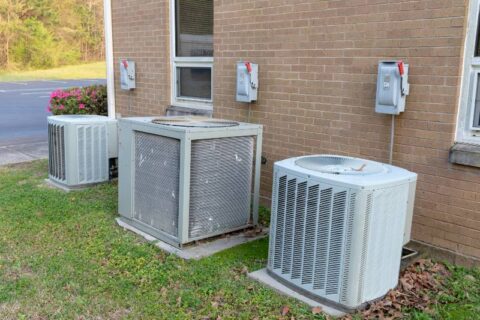What’s the Difference Between a Clogged Drain and a Clogged Sewer Main?
If your sink isn’t draining well or your toilet is clogged, you have an undeniable plumbing problem in need of attention. The question is, do you have a clogged drain or a blocked sewer line? The information here will help you answer this question.
What is a Drain Clog?
A drain is the relatively short plumbing section attached directly to a sink, toilet, shower, or bathtub. It carries wastewater away from these fixtures and off to the sewer. Many things can cause drain clogs, including:
- Pouring grease down the kitchen sink
- Allowing hair, soap, and bits of toothpaste to fall down the bathroom sink
- Flushing too much toilet paper or waste at once
- Flushing objects that aren’t meant to be flushed
Signs of a Clogged Drain
Watch out for these signs:
- Slow-draining sinks, showers, and tubs
- Bubbling toilet water
- Blockages occurring in one fixture at a time
Ways to Clear a Clogged Drain
Rather than reaching for a bottle of harsh drain cleaning chemicals, try these methods:
- Plunge the drain
- Snake the drain
- Pour baking soda down the drain, followed by vinegar and near-boiling water
What is a Sewer Line Blockage?
Your sewer line transports wastewater from your drains to the sewer main owned and maintained by the city. This is a larger pipe than those that serve individual drains. A blockage here can be caused by:
- Clogs from household waste (similar to those described above but more severe)
- Intrusive tree roots
- Cracked, sagging, or crumbling sewer pipes
Signs of a Blocked Sewer Line
Indications that the clog is located further down the sewer line include:
- Very slow drains
- Multiple clogs across several plumbing fixtures
- The use of one plumbing fixture affects another
- Raw sewer backups
- Sewer smells coming from drains
- Water seepage from the sewer cleanout plug
- Unsuccessful attempts to clear the drain
How to Unclog a Main Sewer Line
A damaged sewer line must be addressed right away to avoid a smelly, messy, and unsanitary situation. However, sewer line blockages are more difficult to locate and fix than simple drain clogs. This means the repair is best left to a licensed plumber. If you do attempt to unclog the main sewer line yourself, your options include:
- Clear the clog with a plunger.
- Insert a plumbing snake down the sewer cleanout line.
- Unclog the sewer line with high-pressure water.
Whether you suspect you have a clogged drain or blocked sewer line, reach out to Parley’s PPM Plumbing, Heating & Cooling for help. We have over 40 years of experience clearing plumbing obstructions, no matter their location or cause. We can also repair or replace your sewer line if needed. Call us at 801-226-3033 if you live in Utah County, or dial 801-229-2665 if you’re a Salt Lake County resident. You can also contact us online to ask questions or request an appointment.


